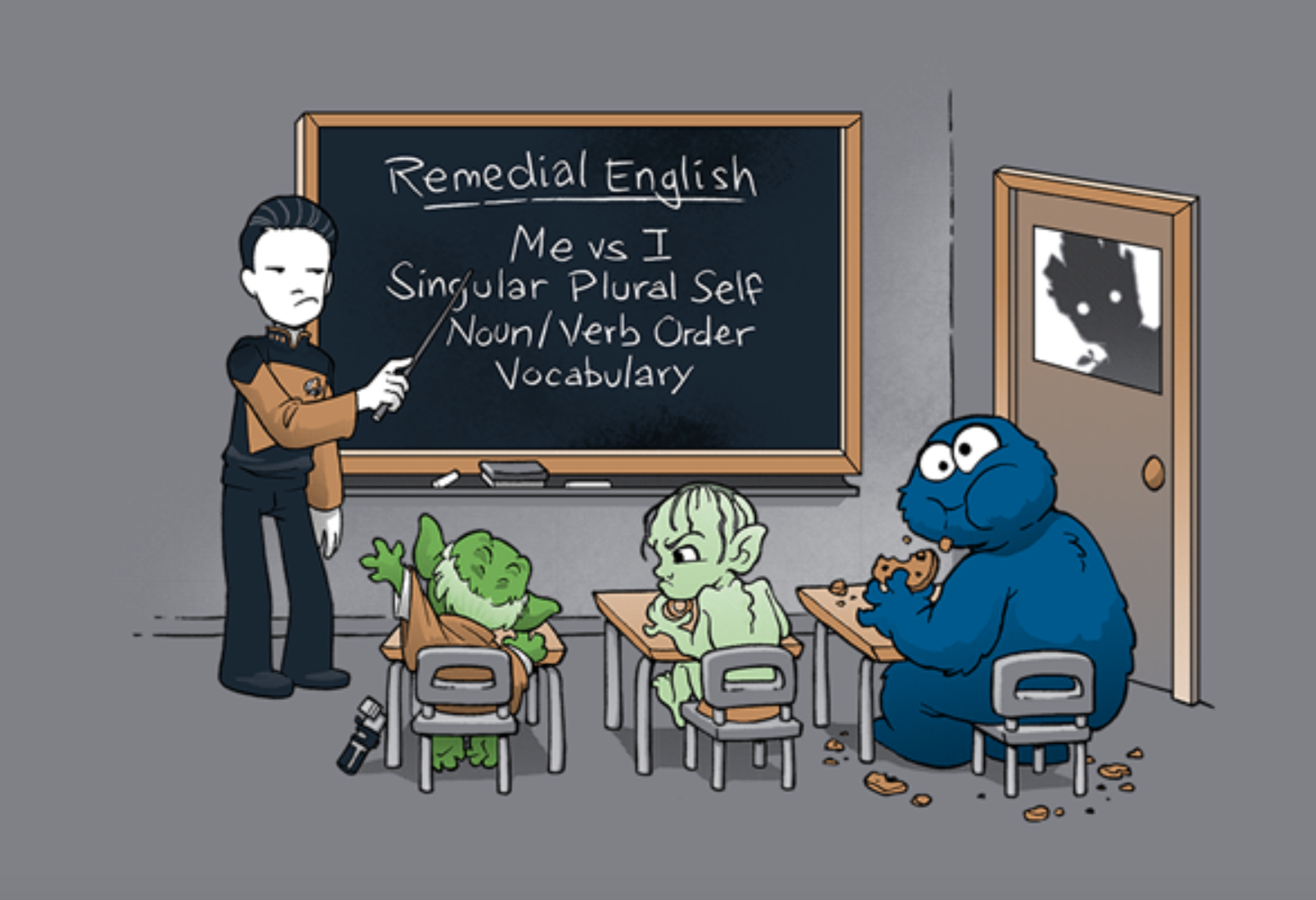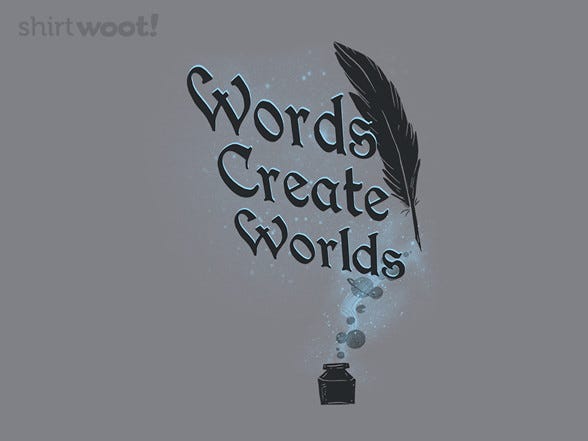
“Our language is the reflection of ourselves. A language is an exact reflection of the character and growth of its speakers.” — Cesar Chavez
The Linguistic Relativity hypothesis proposes the structure of our individual languages impacts our worldview. This hypothesis is known as the “Sapir–Whorf hypothesis”. Also known as Whorfianism, the principle includes two versions.
The strong version suggests that language determines thought and that linguistic categories limit and determine cognitive categories.
The weak version says that linguistic categories and usage only influence thought and decisions.
Whichever the case, it is clear that the words we employ greatly influence how we think about innovation, change and transformation.
This week’s Thursday Thought is inspired by the guests from the innovation show. Many of our guests have suggested that language greatly influence the success of our ideas. Employing the right language can breathe life into a new idea; while employing the wrong language can kill an idea before it even takes flight.
Tabula Rasa — Blank Slate
Within every newborn child is the ability to pronounce every sound in every language.
Later in life English speakers struggle to pronounce the Spanish rolling “r” or beautiful French words such as l’amour (love).
When we are born with the potential to speak perfectly in any language. People who raise children abroad witness how easily their children pick up the local language and can pronounce language as a native speaker would. It is as if children seize the opportunity to absorb a language before it becomes too late.
Myelination
At birth, our neurons are like exposed live wires. Initially, there is no insulation on these neurons, which aids electrical transmission.
As we age, a fatty white substance called myelin coats the neurons forming an insulating layer.
The production of a myelin sheath (like the white insulation on a copper live wire) is called myelination.
During infancy, myelination occurs quickly, leading to a child’s fast development, including crawling and walking in the first year. As our previous guest on the innovation show, Dr Larry Rosen tells us myelination is why we cannot potty train children until they are two years old because the neural pathway to their bowels and bladder is not yet myelinated and the signal from their brain does not travel there fast enough.
While myelination continues through adolescence, the last area of the brain to be myelinated is the pre-frontal cortex. The myelination process is not completed until our mid to late 20’s.
Myelination is like a seal of approval of a certain neural pathway and the way things are “done” in that neural pathway. If we think of the neural pathway as the facilitator of a learned habit, then perhaps myelin seals that habit, akin to firm cement in a foundation.
Dr Srini Pillay told us on the innovation show, our brains lay down neural pathways that mesh with the sounds we hear every day, eliminating other sounds from other languages. When people from China try to learn English, they no longer have the neural pathways to properly say their r’s. Perhaps Myelination is a contributing factor as to why it is easier to learn a language when we are younger before the wires are “sealed” with myelin.
I share these examples to illustrate how our thinking can become “fixed”. To change our thinking, we need to change elements that influence our thinking.
There are countless ways that we subtly, unconsciously carry our belief systems with us, language is one such way.
How Language Influences Thinking
Language is so much more than a series of labels for things. Words have the power to trigger emotions, imagination and action.
Think about a random word, apple, for example. Do you see theword “APPLE” in your mind or do you see the fruit or do you see a picture of the fruit with “A is for Apple” written below it?
The French word for chair is “la chaise”. Rather than reading this from a book, it is so much easier to memorise and internalise the word if someone gestures to a physical chair and says “voilá, la chaise” or someone pulls out a chaise and invites you to “asseyez vous” (sit down). When words become meshed with something tangible, if even just a mental picture or an experience, we not only remember that word, but we associate the ecosystem of other words with that tangible experience. For example, the cushion on the chair, the dining experience and he verbs used around the chair. The word itself becomes a symbol that triggers the memory of the experience. This is why a lot of us are visual learners, we associate images with ideas.
As Srini Pillay says in his excellent book, pictures and symbols convert concrete problems into “forms of themselves” that are easier to work with. They are representations of “things” (like chairs).
Every word itself is a symbol, a shorthand way of describing some “thing”.
Choosing Your Words Carefully
“Whatever words we utter should be chosen with care for people will hear them and be influenced by them for good or ill.” — Buddha
The words we choose are so important when it comes to effecting change and inspiring evolution. We need to change our language to change our thinking.
We can only ever see a vision when we have the correct words for it, words we can relate to. This is similar to learning a new language.
When new business models and new ways of doing things arise we cannot simply square peg the new ways of doing thing into the round hole of the way things used to be done.
Instead, we need new terms or new symbols to represent new business models and new ways of doing things. Renaming things can also help to reframe our emotions.
One of my bugbears is when digital workers use catch-all phrases like “Digital” or “Innovation”. When these words are thrown around they become nothing words, they become meaningless jargon, they become symbols of esoteric behaviour, alienation and even fear.
(Un)Stuck for Words
Many innovation workers, change agents and gainsayers get “stuck for words”. They often see a future that others cannot see, but it can be difficult to articulate that future. This is exponentially more difficult in older organisations where both language and thinking are even more rigid and crystallised.
We discussed how language can become fixed, “myelinated” so to speak. Fortunately, the brain is plastic, it can be reshaped and rewired (neuroplasticity).
This is great news for the change maker. To change people, you cannot simply change business models, you have to fundamentally change mental models. While change is effected through a plethora of means, one such medium is language. This is where many innovation workers fail. I have been guilty of this and also failed. This is why I share this Thursday Thought.
As innovators, we are trained how to brainstorm, think differently and designthink, but we are not trained in how to sell an idea. None of us wants that, we are in this to make an impact, to leave a legacy.
“Just having ideas doesn’t change anything in the world. It’s having ideas that are actionable and acted upon. That’s how you change the world.” — David Owens (EP 100)
To finish this Thursday Thought, I gathered some thoughts on language from various experts on various episodes.
Joe Pine is the father of the Experience Economy. As far back as 1998, Joe introduced a new language to encapsulate new business models and experiences. The world is witnessing a shift from commodities, products and services towards both experiences and transformational experiences. In this world, the language must change. In one of many examples in episode 82, Joe suggests marketing be relabelled as “customering” because this puts the customer first.
Inspired by Joe’s work, Andre Wiringa on episode 96 suggests we relabel customers as guests. Andre tells us this changes how we think of customers, it changes how we think.
On episode 94, Larry Osborne emphasises how we need to employ a language of experimentation and flexibility, not a language of certainty. Why? The status quo will tolerate an experiment, especially because they expect it to fail. Experimentation language gives you runway to get a lot done, all in the name of said experimentation. An added benefit is experimentation language permits us a license for mid-course corrections, in fact, these will be encouraged not just allowed and mid-course corrections will be vital.
On EP 65: “Selling Ideas to Your Boss and Getting Buy-In” Jim Detert explores a framework for the idea or issue selling. He talks of framing the issue as a loss or gain as humans tend to value loss avoidance more than gain of a new thing.
Jim also talks about timing, creating a burning platform if possible. Jim says we can also connect our idea with a hot current project and get it implemented under that project. The timing and context in which you present the idea are paramount.
This point of this post is to bring our attention to the importance of our language choices. P.B. Medawar said the human mind treats new ideas like strange proteins, it rejects them, so we must find a way to introduce new ideas so they are accepted.
This is why this week’s guest is so important in the suite of changemaker armoury. Joel Schwartzberg trains people how to make a point. Joel upskills people in how to identify, sharpen, and champion their most important ideas. An important observation Joel makes is that the burden of clarity is on the idea seller, not the idea buyer.
Identifying, making and selling good points is vital for change as is the language we employ.
THANK YOU FOR READING, IF YOU LIKE THIS PLEASE HIT A THUMB SO OTHERS WILL SEE IT
This week’s innovation show is EP 101: “Get to The Point with author and strategic communications trainer Joel Schwartzberg”
Joel Schwartzberg is a strategic communications trainer. The biggest obstacle he’s come across — one that connects directly to nervousness, stammering, rambling, an epic fail is that most speakers and writers don’t have a point.
They typically have just a title, a theme, a topic, an idea, an assertion, a catchphrase, or even something much less.
This show is about how to identify your point, leverage it, stick to it, and sell it, and train others to turn their biggest fear into their greatest strength, and be the best champions of their greatest ideas.
Have a listen:
Website http://bit.ly/2FwsOJw
Soundcloud https://lnkd.in/gBbTTuF
Spotify http://spoti.fi/2rXnAF4
iTunes https://apple.co/2gFvFbO
Tunein http://bit.ly/2rRwDad
iHeart Radio http://bit.ly/2E4fhfl
You can find out about Joel and his work here:


